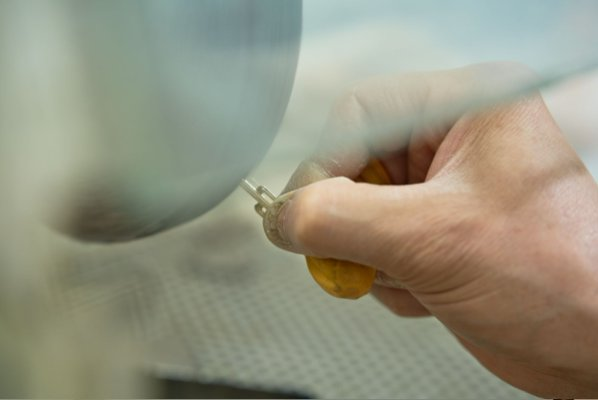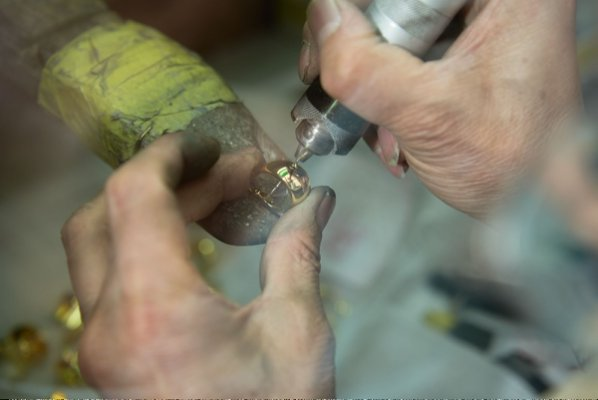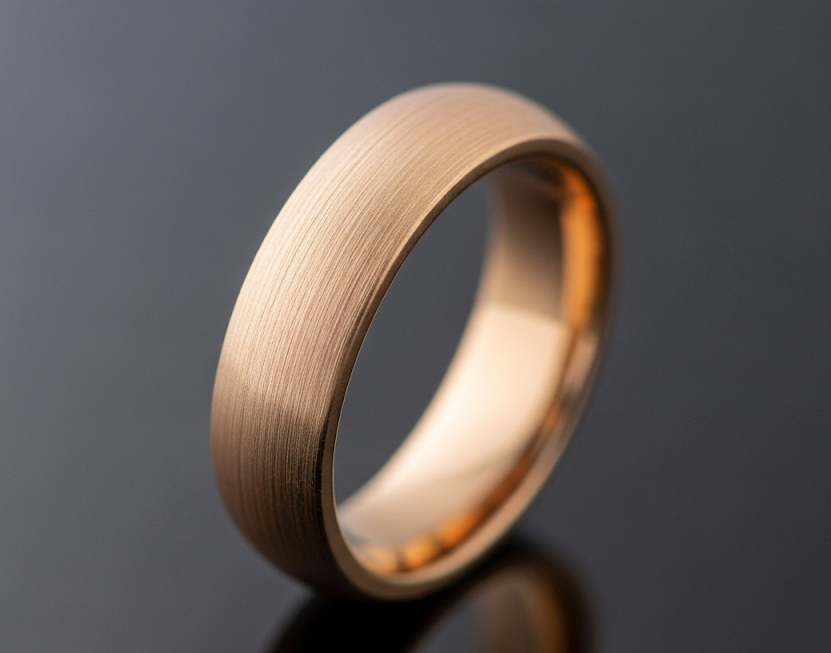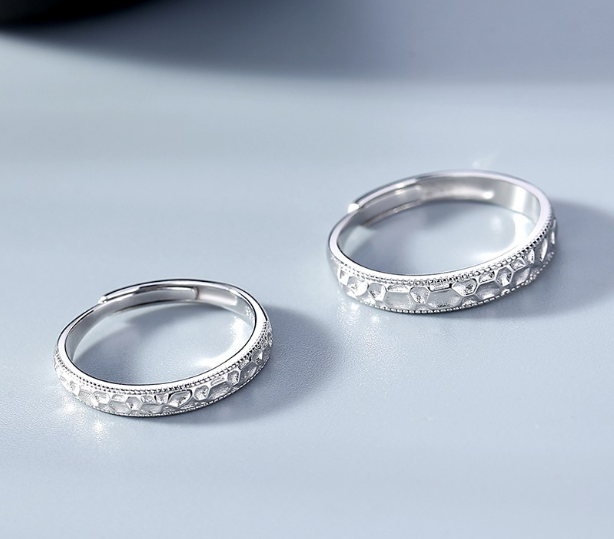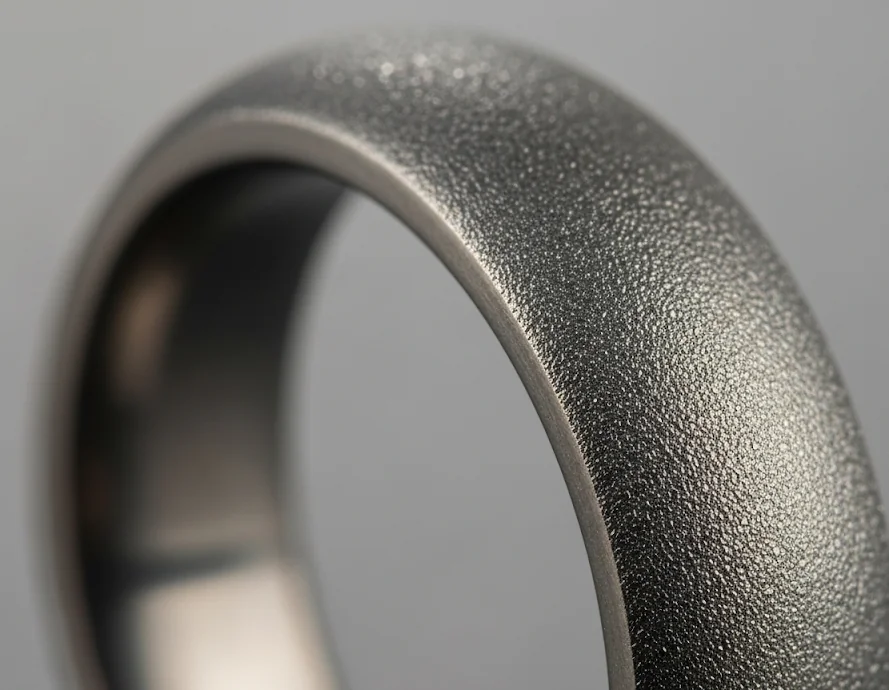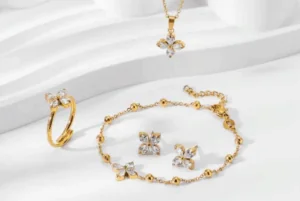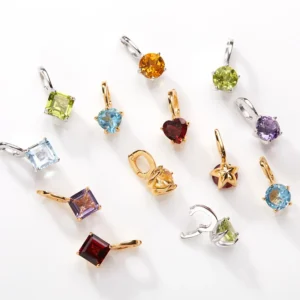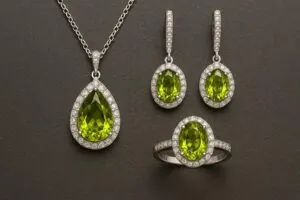In jewelry manufacturing, surface finishes define how a piece looks, feels, and performs over time. The chosen treatment can enhance brilliance, emphasize craftsmanship, or create a distinctive brand identity. From the mirror-like high polish to the textured character of brushed, hammered, or sandblasted surfaces, each surface treatment offers unique visual and functional qualities.
In this article, we will talk about the popular jewelry finishes in surface treatment and show how they impact both design and durability.
High Polish
In jewelry finishes, the high polish offers a near-reflective surface. Jewelers use progressively finer abrasives. It is followed by cloth buffing wheels loaded with compounds like rouge. Such compounds remove microscopic scratches and smooth out the metal’s topography. The process decreases any light scatter on the surface. Consequently, the metal reflects light almost uniformly. It helps create a bright, mirror-like effect that highlights every contour of the piece.
This approach to jewelry finishes works on metals with high hardness and good ductility, including platinum, gold alloys, or stainless steel. High polish complements pieces with clean lines and precision detailing. A strong reflective finish can show small imperfections, so jewelers reserve it for designs with superior craftsmanship. The benefit is clear: a polished surface magnifies the luster of the metal. It draws attention to any gemstones or engraving details.
Brushed Finish
Among jewelry finishes, the brushed look arises from using abrasive pads or wheels of different grit for fine parallel lines on the metal. Jewelers use steel brushes or sandpaper so each stroke meets the intended design. The result is a subdued texture with a grain pattern. It uses controlled passes over the piece; too much abrasion can remove excess metal or create uneven streaks.
Regarding jewelry finishes, a brushed surface offers a low-reflective, contemporary aesthetic. It’s forgiving of minor wear because additional scratches can blend with the existing linear texture. It is practical for everyday rings, bracelets, and watch bands. The durability depends on the material’s hardness. Stainless steel or titanium holds their brushed lines longer. Conversely, softer alloys might need re-brushing over time for a uniform look.
Hammered Finish
Of all jewelry finishes, the hammered finish is unique thanks to its dimpled surface. Jewelers create them while striking the metal with a hammer or peen (varying angles) and force for a random pattern. The repeated impact compresses and hardens the metal at the surface level. It can augment the piece’s strength and leave each impact mark visible for a tactile, uneven texture.
The hammered look adds rustic appeal and individuality to the design in jewelry finishes. Each dimple reflects light from angles to give the piece an organic shimmer. Artisans favor this finish for wide cuffs, statement rings, or pendants to show the dramatic texture. It’s popular with copper and sterling silver; the malleability offers deeper impressions and striking, handcrafted character.
Sandblasting
Sandblasting propels fine media (glass beads or aluminum oxide) within jewelry finishes at high pressure against the metal. It pits the surface uniformly for a frosty, matte look. The grain size of the blasting media defines the texture. Coarser media yield a deeper, more noticeable finish; finer media give a subtler matte look. Air pressure calibration ensures the metal is not over-abraded.
Sandblasting draws those pursuing a sleek, contemporary style in jewelry finish. The resulting micro-rough texture is less prone to noticeable wear. That’s because minor scuffs blend into the frosted surface. Jewelers use this method on titanium, tungsten, or stainless steel pieces, which accentuate clean lines and understated stylishness. Regular touch-ups are rarely needed because the uniform roughness resists polished spots and preserves an unswerving matte effect over time.
Partner with Star Harvest
After learning different types of polishing, you may wonder how to perfectly integrate these surface treatment techniques into your jewelry design. It is crucial to choose a professional OEM/ODM jewelry manufacturer who can implement these surface treatments precisely for beautiful, durable pieces.
With years of experience in jewelry manufacturing, Star Harvest applies advanced surface treatment techniques to deliver smooth and visually striking finishes for every piece. Our expertise includes:
- Mold crafting: We create accurate base shapes and fine details for smooth and efficient polishing.
- Meticulous grinding: Using abrasive wheels, fine sandpapers, and careful hand techniques, we remove surface imperfections to create a consistent base for polishing.
- Precision polishing: With soft buffing pads and skilled hand finishing, we refine surfaces to enhance shine, bring out intricate design details, and deliver a polished, high-quality finish.
- Electroplating support: Through meticulous surface preparation, controlled plating processes, and careful post-treatment, we deliver vibrant, long-lasting plated finishes on jewelry pieces that resist wear and preserve design integrity.
By combining these techniques, Star Harvest optimizes its surface treatment process to manufacture jewelry pieces that meet your design requirements, maintain high-quality polish, and achieve durability.
Get in touch today and let Star Harvest handle the technical excellence behind your jewelry creations.

